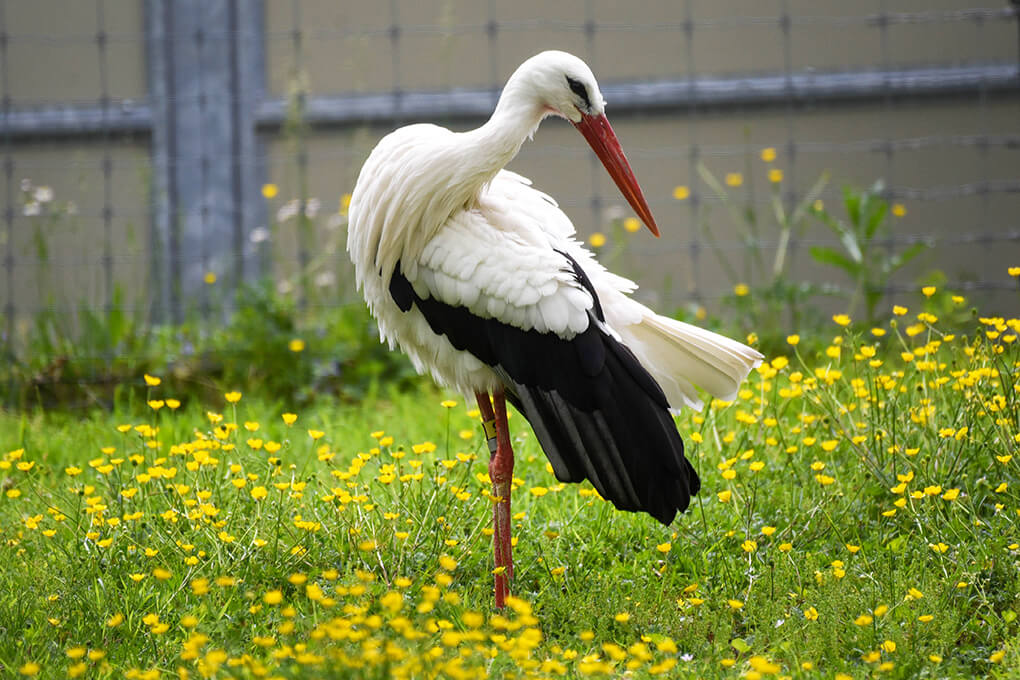Overview
“Where I live”
White storks breed throughout Europe, North Africa, and Southwest Asia, and migrate south into sub-Saharan Africa and South Asia for the winter. They arrive on their southern wintering grounds by October, traveling in large flocks that may number in the thousands.
These birds prefer dry, open areas and avoid cold, wet, heavily forested areas. They are often seen in or near agricultural fields and in pastures where livestock graze.
“How I live there”
These long-legged wading birds are opportunistic feeders that take what they can get. They wade through shallow water or tall grass, searching for and stabbing prey with their sharp beaks. Prey may include small mammals such as voles, water voles, mice, shrews, and young rats, as well as large insects such as beetles, grasshoppers, crickets, and locusts. They also eat amphibians, reptiles, fish, shellfish, and the eggs and nestlings of ground-nesting birds.
White storks are nomadic while in Africa and move in response to food availability. They normally forage in groups of 10 to 50 birds but will gather by the thousands when an opportunity to feast, such as a grass fire or locust swarm, presents itself. They feed by day and roost communally in trees at night.
“Making my mark”
White storks are easy to identify by their brilliant white plumage, black primary feathers on the wings, and red legs. Largely silent, white storks nonetheless have the most advanced bill-clattering display of all storks. They throw their heads back and clatter their upper and lower mandibles together to create a loud percussive rattle.
“What threatens me”
Few animals threaten adult white storks, but eggs and nestlings are vulnerable to a variety of nest predators, including hawks, eagles, genets, and monitor lizards. These birds are hunted by humans for food and for sport, especially while migrating.
White storks are listed as a species of “least concern” by the IUCN, the world’s leading conservation organization. These birds have a large range and their overall population appears to be increasing. Nonetheless, white storks also contend with threats that include habitat loss through draining of wetlands, hunting, collision with power lines, and ingestion of toxic insecticides and pesticides. The storks’ habit of building nests on roofs and chimneys also leads some people to persecute them as pests.
Raising Young
Male white storks arrive at the nesting grounds first and typically accept the first mate to approach their nesting site. White storks position their stick nests off the ground in trees, on roofs, atop utility poles, or elsewhere high off the ground. Their large nests can be up to 6 ft wide and 9 ft deep. Pairs nest solitarily or in small groups. Both parents feed the chicks in the nest by regurgitating food directly into their mouths. Chicks usually fledge about two months after hatching.
Taxonomy
- Kingdom: Animalia
- Phylum: Chordata
- Subphylum: Vertebrata
- Class: Aves
- Order: Ciconiiformes
- Family: Ciconiidae
- Genera: Ciconia
- Species: ciconia

